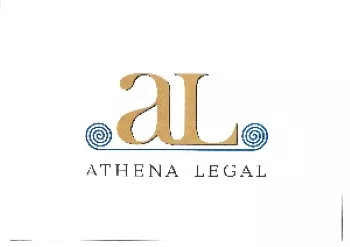- within Transport topic(s)
- with Inhouse Counsel
- in China
- with readers working within the Retail & Leisure and Law Firm industries
- Governing Legislation
1.1. Bharatiya Vayuyan Adhiniyam, 2024 (Act No. 16 of 2024) (the "BVA"), which replaced the Aircraft Act, 1934, along with the Drone Rules, 2021 ("Drone Rules"), as amended from time to time, provide the regulatory framework for drones in India. The BVA came into force in January of 2025, providing the overarching statutory framework for aviation regulation in India, including unmanned aircraft systems.
- Scope and Applicability
2.1. The term "Drone" refers to an Unmanned Aircraft System ("UAS") as defined under Rule 3(i) of the Drone Rules. UAS is defined as an aircraft that is capable of operating either autonomously or through remote operation, without a pilot on board.
2.2. The Drone Rules, under Rule 2(1), governs: (a) all persons owning, possessing, leasing, operating, transferring, or maintaining UAS in India; (b) all UAS registered in India regardless of operational location; and (c) all UAS operating within or over Indian territory, creating overlapping personal, nationality-based, and territorial regulatory coverage.
2.3. However, certain exemptions exist, notably for systems belonging to or used by the naval, military, or air forces of the Union of India. The Drone Rules also exclude from its ambit UAS's weighing more than 500 kilograms, which fall under the BVA.
- Classification and Categorization Framework
3.1. The Drone Rules provide for a sophisticated classification system based on both aircraft type and weight. UAS are categorized into three primary types: aeroplanes, rotorcraft, and hybrid unmanned aircraft systems. These are further sub-categorized as remotely piloted aircraft systems, model remotely piloted aircraft systems, and autonomous unmanned aircraft systems.
3.2. The Drone Rules provide for the weight-based classification which is particularly significant for regulatory compliance:
- a) Nano unmanned aircraft systems: 250 grams or less
- b) Micro unmanned aircraft systems: More than 250 grams but not exceeding 2 kilograms
- c) Small unmanned aircraft systems: More than 2 kilograms but not exceeding 25 kilograms
- d) Medium unmanned aircraft systems: More than 25 kilograms but not exceeding 150 kilograms
- e) Large unmanned aircraft systems: More than 150 kilograms
- Registration and Certification Requirements
4.1. Type Certification
Under the Drone Rules, type certification means a certificate issued by the Director General, or an authorised entity, confirming that a specific type of UAS meets the requirements set out in the Drone Rules. Rule 6 mandates a Directorate General of Civil Aviation ("DGCA") issued type certificate for all UAS except those exempted under Rule 13. Exemptions apply to model remotely piloted aircraft systems, nano UAS (≤250 g), and certain entities for operating UAS for research, development and testing purposes provided such operations take place within a green zone and within the premises of such research or within an open area under such person's control under Rule 42. Additionally, manufacturing or importing of an UAS is exempted from the mandate.
4.2. Remote Pilot Certificate
A Remote Pilot Certificate is a certificate issued by an authorised remote pilot training organisation to any individual under Rule 34. Rule 31 requires all remote pilots, other than those exempted under Rule 36, to obtain the Remote Pilot Certificate, which replaced the earlier DGCA-issued Remote Pilot License pursuant to the Drone (Amendment) Rules, 2022. Applicants must complete training at a DGCA-authorised organisation (Rule 34) and pass the prescribed competency test before certification. Under Rule 36(b), no Remote Pilot Certificate is required for operating a nano UAS, or for operating a micro UAS for non-commercial purposes.
4.3. Registration of Unmanned Aircraft System
Rule 14(1) requires registration of every UAS on the Digital Sky Platform and assignment of a Unique Identification Number via Form D-2 prior to operation. Existing UAS were required to be registered within the period prescribed under Rule 16, which was later extended to 31 March 2022 by amendment.
- Operational Framework and Zonal Restrictions
5.1. India's drone regulatory system employs a unique three-zone airspace classification:
- a) Green Zone: Airspace up to 400 feet (120 meters) above ground level where drone operations are generally permitted without prior permission, excluding areas designated as red or yellow zones.
- b) Yellow Zone: Restricted air space requiring permission from concerned air traffic control authorities. This includes airspace above 400 feet in green zones and areas between 8-12 kilometers from operational airports at heights above 200 feet.
- c) Red Zone: Highly restricted airspace where drone operations are permitted only by the Central Government under exceptional circumstances, typically covering sensitive installations and security areas.
5.2. The law requires mandatory pre-flight verification of zonal restrictions through the Digital Sky Platform before commencing any UAS operation.
- Penalties and Enforcement
6.1. The Drone Rules empower the Director General or an officer authorised by the Central Government, State Government, or Union Territory Administration to levy penalties up to ₹1,00,000, after providing an opportunity of being heard and recording reasons in writing
6.2. The enforcement framework includes powers for inspection by the Director General or authorized persons, mandatory accident reporting within forty-eight hours, and provisions for cancellation or suspension of certificates for rule contraventions.
- Digital Sky Platform and Technological Integration
7.1. The Digital Sky Platform is an online platform hosted by the DGCA for various activities related to the management of UAS activities in India
7.2. The regulatory framework mandates use of the Digital Sky Platform as the central online portal for all drone-related activities, including registration, certification, flight permissions, and compliance monitoring. The platform provides interactive airspace maps with programmatic accessibility and real-time updates on zonal restrictions.
- Commercial and Research Operations
8.1. The Drone rules establish specific provisions for research, development, and testing operations, exempting certain entities including government research institutions, recognized educational institutions, authorized startups, and manufacturers with GST identification numbers from standard certification requirements, provided operations occur within controlled environments in green zones.
- Insurance and Safety Requirements
9.1. The Motor Vehicles Act, 1988 provisions apply mutatis mutandis to third-party insurance requirements for UAS, though nano systems may operate without mandatory insurance coverage. The Central Government retains authority to specify additional safety features through future notifications.
- Way Forward – Draft Civil Drone (Promotion and Regulation) Bill, 2025
Vide circular dated 16th September 2025, the Ministry of Civil Aviation released the Draft Civil Drone (Promotion and Regulation) Bill, 2025 ("Draft Bill") for public consultation. The Draft Bill aims to replace the existing Drone Rules with a comprehensive statutory framework for civil drone regulation in India. It explicitly repeals the Drone Rules and related amendments under Section 51(1), while Section 51(2) provides for the continuation of existing registrations, certificates, and approvals to ensure a smooth transition.
The content of this article is intended to provide a general guide to the subject matter. Specialist advice should be sought about your specific circumstances.



